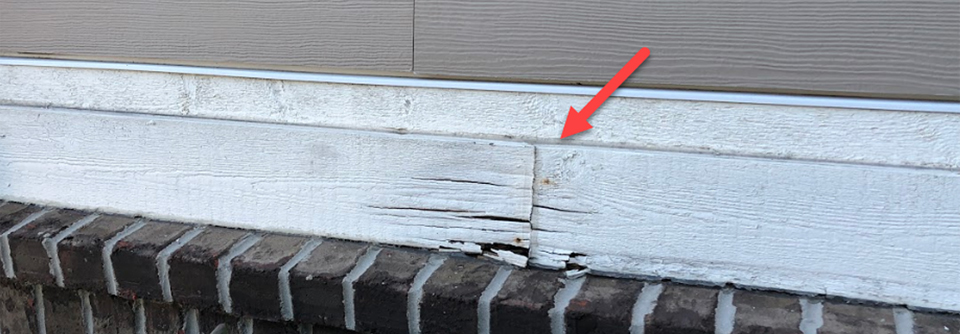
Wood Rot Repair in Indianapolis | How to Identify, Repair & Prevent Rotted Wood
Posted on April 4, 2019
Wood rot, also referred to as the cancer of homes with wooden siding or trim, can destroy a beautiful wooden structure quickly. Siding, soffits, railings and more can be affected by rain and water pooling against them causing damage. The climate of Indianapolis makes it especially important to keep an eye on the health of your home’s wooden structures. The often dramatic changes between seasons creates many opportunities for rotting. Is the exterior of your home rotting? Professional exterior wood home repairs might be in order.
Whether the water comes from rain and snow melting or failing paint and caulking, the outcome remains: rotten wood. Addressing the issue quickly will save you time and heartache.
Because water damage on wood can spread quickly, it requires immediate attention. If left untreated rotting wood could impact the structural integrity of your home.
So what causes rotting wood?
Moisture lingering on wood will ultimately cause the fibers of the wood to deteriorate. Unprotected wood, or wood with imperfections in the protective coating is susceptible to rot. In Indiana, we can often go from ideal weather to heavy rainfall at a moment’s notice, so it’s important to check on your structures after a period of rain.
How do I find rotten wood?
To find spots of rotting wood, get a screwdriver and start inspecting the boards on the exterior of your home. Start by checking boards lowest to the ground and along your roof line. Also, check the seams where two boards meet. Most rot is visible in plain site, but often will be hidden. Remember that as you inspect, wood should never be soft when pressed. Use the tip of a screwdriver to press into questionable areas. If it gives, you should repair. Cracks that appear to be folding in are a clear sign of rot.
What are the most common carpentry repairs for wood rot?
Trim boards that have chipping paint and loose caulking are the most common place to find rot. Typically these will be cedar boards or LP SmartSide trim boards. These are the most common trim building materials here in Indianapolis. With cedar you will see splitting and deterioration, with LP trim you’ll see the board getting thicker from the moisture intake. Homeowners who do not repaint their exterior regularly are likely to discover these trim rot issues.
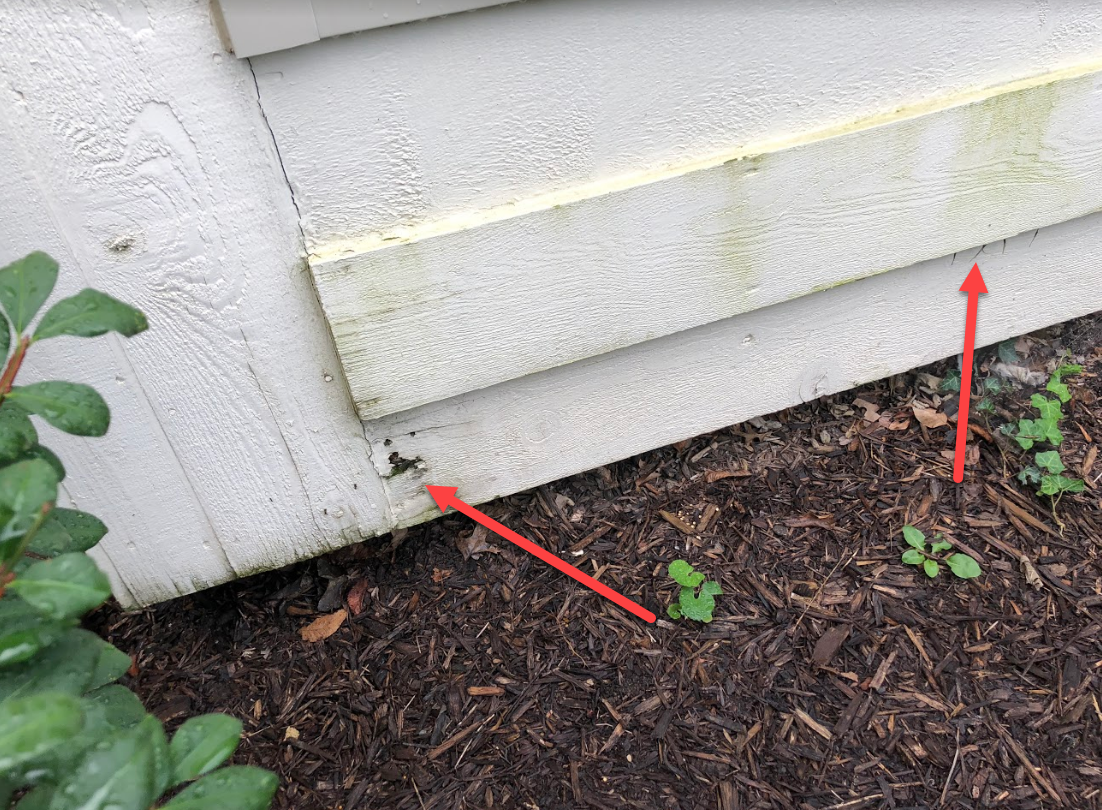


Window and door frames on the exterior of your home, can often have damage. Rainwater collects in the joints and at the base and can wear away at the paint or seal allowing the wood to be penetrated with moisture.
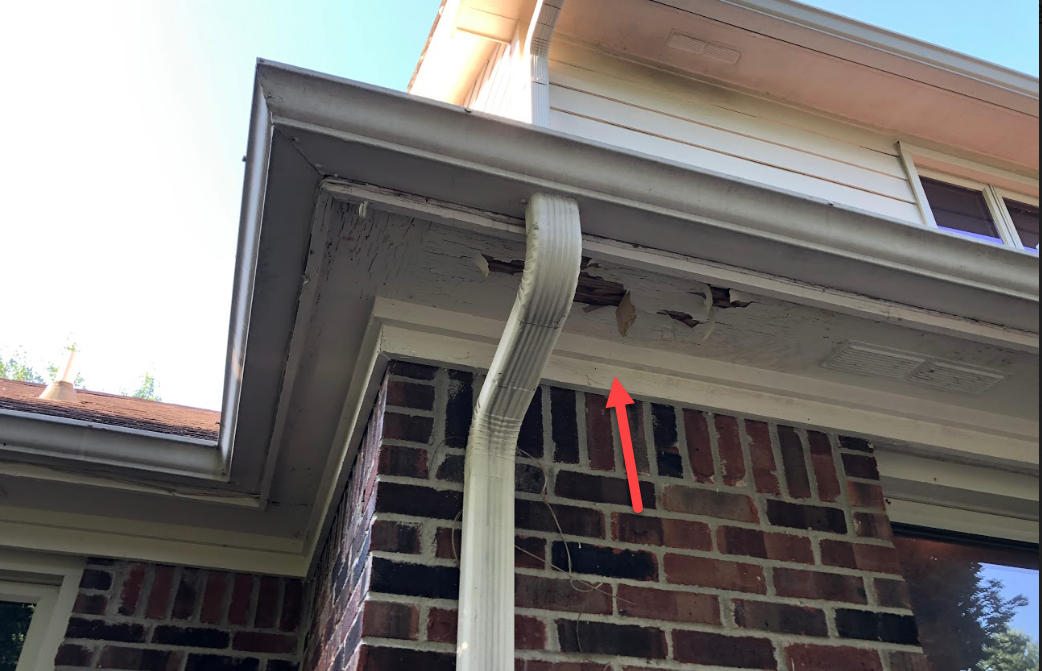
Porch column base caps you will commonly find rotten. Many builders in the Indianapolis area will install trim at the base of a porch post or column. Because these board often touch the porch flooring they will be exposed to standing water which causes the rot.
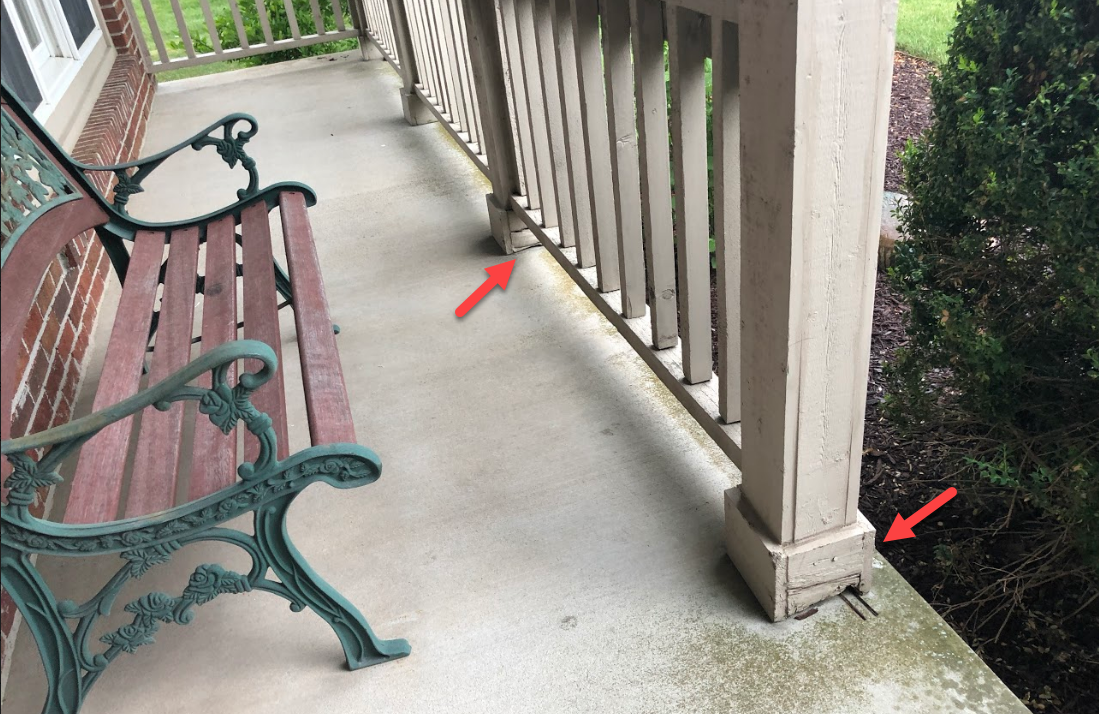
Depending on the treatment used on your deck, several year’s worth of snow and rain can wash away any protective coating you may have had. Spring is a good time to get outside and check the deck, beams, stairs and other areas.
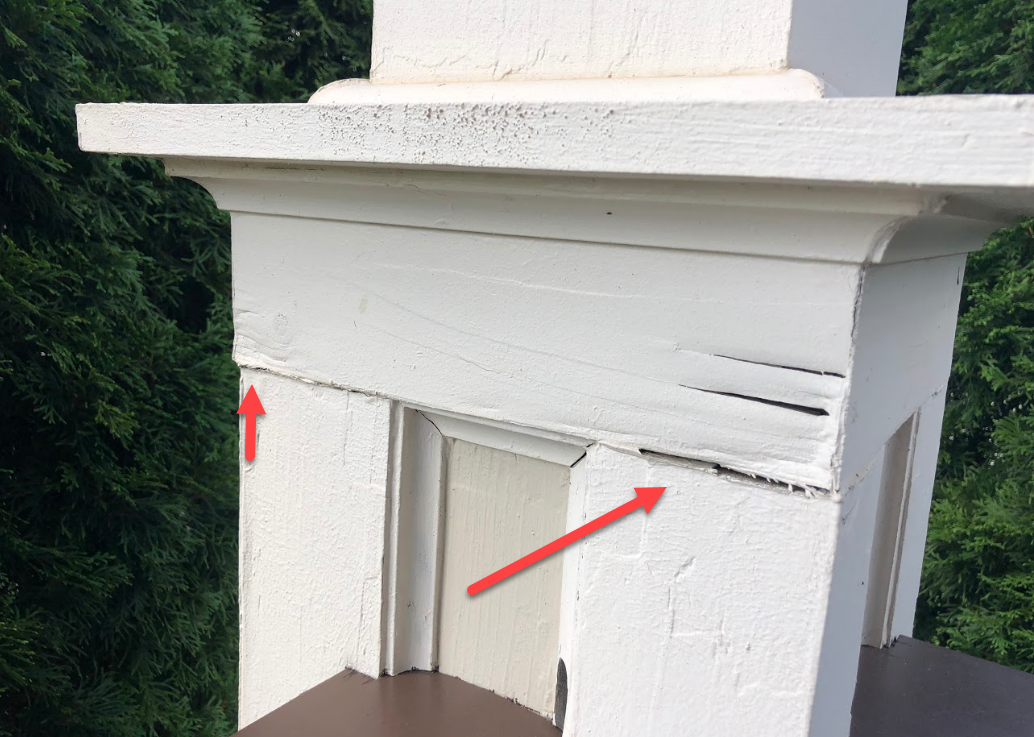
How do I prevent rot?
Keeping water and wood separate is the only sure way to prevent wood rot. Regular painting and caulking and using preventative building materials will help to keep your home safe.
Moving forward, consider additional changes to your home where you have found rot. Building materials you can commonly find here in Indianapolis such as fiber cement or PVC will stand up to moisture better than cedar trim or LP SmartSide trim.
What to do if you find wood rot?
If you find rotten wood on the exterior of your home, repairs are necessary. You can choose to attack the problem on your own or hire a professional. The team at CertaPro Painters of Indianapolis are experts in wood repairs and replacements. Get an estimate now! For more photos of what examples of wood rot on home in your neighborhood looks like visit our carpentry repairs page.





